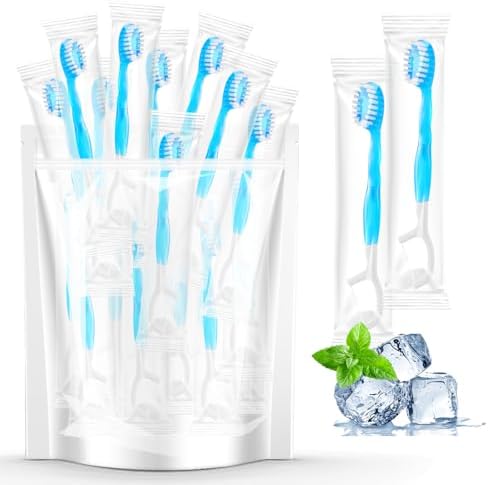Toothbrushes With Toothpaste: Convenient Cleaning

The advent of toothbrushes with built-in toothpaste has revolutionized the way we approach oral hygiene. These innovative tools combine the traditional toothbrush with a compartment that holds toothpaste, eliminating the need for a separate tube of toothpaste. This convenient design has made brushing teeth easier, faster, and more efficient, especially for individuals with busy lifestyles or those who tend to forget to pack their toothpaste when traveling.
Historical Evolution of Toothbrushes
To understand the significance of toothbrushes with toothpaste, it’s essential to glance at the historical evolution of toothbrushes. The first toothbrushes were made from twigs with frayed ends, used by the ancient Chinese around 5000 BC. Over the centuries, toothbrushes evolved to include handles made from ivory, wood, or plastic, and bristles from boar hair or nylon. The introduction of toothpaste as we know it today, with its mixture of abrasives, detergents, and fluoride, marked another significant milestone in oral hygiene. The latest iteration, toothbrushes with integrated toothpaste, represents a convergence of these historical developments, aimed at making oral care more accessible and user-friendly.
Technical Breakdown: How They Work
Toothbrushes with toothpaste integrate a small compartment within the handle that contains a toothpaste pellet or a gel-like substance. When the user squeezes the handle or presses a button, the toothpaste is dispensed onto the bristles, ready for brushing. This mechanism ensures that the right amount of toothpaste is used each time, reducing waste and making the brushing process more consistent. Some models come with replaceable toothpaste cartridges, allowing users to choose their preferred toothpaste flavor and type.
Comparative Analysis: Traditional vs. Integrated Toothbrushes
When comparing traditional toothbrushes with those that have built-in toothpaste, several factors come into play. Convenience is a significant advantage of integrated toothbrushes, as they eliminate the need to carry a separate tube of toothpaste. This feature is particularly beneficial for travelers, campers, or individuals who brush their teeth on-the-go. However, some users might find the toothpaste dispensing mechanism awkward or less intuitive than squeezing toothpaste from a tube. Additionally, the choice of toothpaste is limited to what is integrated into the toothbrush or available in replacement cartridges, which might not cater to all dental needs or preferences.
Decision Framework: Choosing the Right Toothbrush
Selecting the appropriate toothbrush, whether traditional or with integrated toothpaste, depends on several factors:
- Convenience and Portability: For those who value ease of use and minimalism, toothbrushes with toothpaste might be the better choice.
- Toothpaste Preference: Individuals with specific dental needs or preferences for certain toothpaste brands or flavors might find traditional toothbrushes more flexible.
- Budget: The cost of toothbrushes with integrated toothpaste can be higher than traditional toothbrushes, especially considering the need for replacement cartridges.
- Environmental Impact: The integrated design might reduce waste from toothpaste tubes, but the production and disposal of the toothbrush itself, along with its toothpaste cartridges, could have a different environmental footprint.
Expert Perspective: Oral Hygiene Specialists Weigh In
Oral hygiene specialists highlight the importance of proper brushing technique, regardless of the type of toothbrush used. The integration of toothpaste into the toothbrush can encourage more consistent brushing habits, as it simplifies the process. However, it’s crucial for users to still follow the recommended brushing time of at least two minutes, twice a day, and to replace their toothbrush (or the toothpaste cartridge) as frequently as recommended.
FAQ Section
Are toothbrushes with toothpaste suitable for all ages?
+Toothbrushes with integrated toothpaste can be used by adults and children alike, provided the toothbrush is designed for the user's age group and dental needs. However, children should be supervised to ensure they understand how to use the toothbrush correctly and to prevent choking hazards with the toothpaste pellets or cartridges.
How do I clean and maintain my toothbrush with toothpaste?
+Cleaning and maintaining a toothbrush with integrated toothpaste involves rinsing the toothbrush head thoroughly after use and allowing it to air dry. It's also important to follow the manufacturer's instructions for replacing the toothpaste cartridge and to check the toothbrush for any wear or damage, replacing it as needed.
Can I use a toothbrush with toothpaste if I have sensitive teeth or gums?
+Individuals with sensitive teeth or gums can use toothbrushes with integrated toothpaste, but it's advisable to choose a model that dispenses a gentle, sensitive-formula toothpaste. Additionally, brushing gently and using a soft-bristled toothbrush can help minimize discomfort and prevent further irritation.
Conclusion
Toothbrushes with toothpaste represent a significant step forward in oral hygiene convenience and accessibility. While they offer numerous benefits, including ease of use and portability, their suitability depends on individual preferences, dental needs, and lifestyle. By understanding the technical aspects, comparative advantages, and expert insights regarding these innovative tools, consumers can make informed decisions about their oral care routines. As technology continues to evolve, it will be interesting to see how toothbrushes with toothpaste adapt to meet various dental needs and preferences, potentially incorporating more sustainable materials, advanced dispensing mechanisms, and personalized oral care solutions.
